Eskay Mining (ESK.V): Defines Multiple Mineralized Horizons Across Its 100% Owned Consolidated Eskay Precious Metal-Rich VMS Project
TORONTO,ON / ACCESSWIRE / April 13, 2021 / Eskay Mining Corp. (“Eskay” or the “Company”) (TSXV:ESK)(OTCQB:ESKYF)(Frankfurt:KN7) (WKN:A0YDPM) is pleased to announce that it has reviewed all data from its2020 exploration campaign and has conclusively identified multiple mineralized horizons at its 100% owned Consolidated Eskay precious metal-rich volcanogenic massive sulphide (“VMS”) project in the Golden Triangle, British Columbia. This newly synthesized model of the sea floor mineralizing system demonstrates that at least six stratigraphic units are prospective for precious metal-rich VMS deposits across Eskay’s 526 sq km property. Discussion about this new model will be presented by Dr. John DeDecker, VP Exploration at the Toronto Geological Discussion Group at 4PM Eastern Time, April 13,2021 (https://www.tgdg.net/event-4243258).
Summary:
- Systematic and rigorous geological investigations have been conducted since completion of the Company’s successful 2020 field season. A new synthesis of the understanding of the sea floor mineralizing system demonstrates that multiple mineralized units are prospective for precious metal-rich VMS deposits across Eskay’s 526 sq km property.
- On Eskay Mining’s land tenure, six mineralized horizons have now been confirmed within the entirety of the Hazelton Group stratigraphy, the volcanic and sedimentary sequence of host rocks that formed on the sea floor (Figure 1). These include from top to bottom: 1) the Contact Mudstone horizon, host to the high grade Eskay Creek deposit, 2) the Eskay Rhyolite Mudstone Horizon, 3) the Bruce Glacier Mudstone Horizon, 4) The Spatsizi Mineralized Zone, 5) the Brucejack Lake Mineralized Zone, and 6) the Johnny Mt Dacite Mineralized Zone. Horizons 1-3 have been identified at the adjacent Eskay Creek property and continue onto the Company’s property. Horizons 4-6 have been newly identified by Eskay and collectively represent a previously unrecognized VMS mineralizing event on the Company’s land holdings and within in the Golden Triangle as a whole.
- The Johnny Mt Dacite Mineralized Zone, and the Brucejack Lake Mineralized Zone are within the Betty Creek Formation and are closely associated with mudstone, and dacitic and basaltic breccia. These rocks formed in a submarine environment and display a bimodal volcanic composition, a hallmark of back-arc rifting. Precious metal-rich sulfide mineralization hosted by these units is interpreted to be sub-seafloor replacement-style (Figure 2) and formed when mineralizing fluids percolated through and precipitated metals within dacite and basalt breccia piles in a shallow seafloor environment. The discovery of unambiguous near-seafloor VMS
mineralization within the older Betty Creek Formation indicates that back-arc rifting and VMS hydrothermal activity within the Eskay Rift began much earlier than previously thought. The implications of this discovery are profound, because it means the entire Hazelton Group stratigraphy is prospective for Eskay Creek-like VMS deposits.
– Detailed stratigraphic and geochemical investigations have allowed for correlation of stratigraphy including precious metal-bearing VMS deposits at the Company’s TV and Jeff deposits to the highly prospective C10 area a few km south. Although late metamorphism overprints rocks at C10, Eskay now can “see through” this overprint and thinks there is exceptional potential for discovery of precious metal-rich VMS deposits at C10 like those discovered by the Company at TV and Jeff last year. Stream sediment sampling (“BLEG”) at C10 in 2020 identified very high Au anomalism over a broad area approximately 7 km along strike. With the power of this enhanced model, Eskay anticipates developing drill targets at C10 for testing this year.
– The Spatsizi Mineralized Zone comprises volcaniclastic conglomerate and sandstone deposited during resurgence of seafloor rifting. Mineralization within this zone is primarily stringer-style and is focused in permeable rocks of coarse grain size that served as a path of least resistance for mineralizing fluids on their way to the seafloor.
– In addition to the new geologic model discussed above, Eskay has also completed study of gold and silver VMS mineralization. Gold primarily occurs as electrum, and silver in sulfosalt minerals including tetrahedrite, miargyrite, and pyrargyrite (Figures 3-5). Such precious metal mineral assemblage occurs along both limbs of the Eskay anticline at all stratigraphic levels. Pathfinder elements, As, Sb, Hg, and Tl, correlate with precious metal mineralization. Geochemical and microscopic investigations show intense hydrothermal alteration associated with precious metal mineralization.
“Eskay Mining’s exploration team applies thorough science to its exploration approach,” commented Dr. Quinton Hennigh, director and technical advisor to Eskay Mining. “We are delighted to see the synthesis of this new geologic model. Having a strong handle on the mineralizing processes and prospective host rocks puts us in an excellent position to have a highly successful 2021 exploration campaign. This campaign kicks off shortly with a SkyTEM survey covering all areas not covered by the 2020 survey. Our
+30,000 m drill program is anticipated to commence in June. We think 2021 will be the most important year in the history of the Company.”
Dr. Quinton Hennigh, P. Geo., a Director of the Company and its technical adviser, a qualified person as defined by National Instrument 43-101, has reviewed and approved the technical contents of this news release.
About Eskay Mining Corp:
Eskay Mining Corp (TSX-V:ESK) is a TSX Venture Exchange listed company, headquartered in Toronto, Ontario. Eskay is an exploration company focused on the exploration and development of precious and base metals along the Eskay rift in a highly prolific region of northwest British Columbia known as the “Golden Triangle,” approximately 70km northwest of Stewart, BC. The Company currently holds mineral tenures in this area comprised of 177 claims (130,000 acres).
All material information on the Company may be found on its website at www.eskaymining.com and on
SEDAR at www.sedar.com.
For further information, please contact:
Mac Balkam T: 416 907 4020
President & Chief Executive Officer E: [email protected]
Neither the TSX Venture Exchange nor its Regulation Services Provider (as that term is defined in the policies of the TSX Venture Exchange) accepts responsibility for the adequacy or accuracy of this release.
Forward-Looking Statements: This Press Release contains forward-looking statements that involve risks and uncertainties, which may cause actual results to differ materially from the statements made. When used in this document, the words “may”, “would”, “could”, “will”, “intend”, “plan”, “anticipate”, “believe”, “estimate”, “expect” and similar expressions are intended to identify forward-looking statements. Such statements reflect our current views with respect to future events and are subject to risks and uncertainties. Many factors could cause our actual results to differ materially from the statements made, including those factors discussed in filings made by us with the Canadian securities regulatory authorities. Should one or more of these risks and uncertainties, such as actual results of current exploration programs, the general risks associated with the mining industry, the price of gold and other metals, currency and interest rate fluctuations, increased competition and general economic and market factors, occur or should assumptions underlying the forward looking statements prove incorrect, actual results may vary materially from those described herein as intended, planned, anticipated, or expected. We do not intend and do not assume any obligation to update these forward-looking statements, except as required by law. Shareholders are cautioned not to put undue reliance on such forward-looking statements.
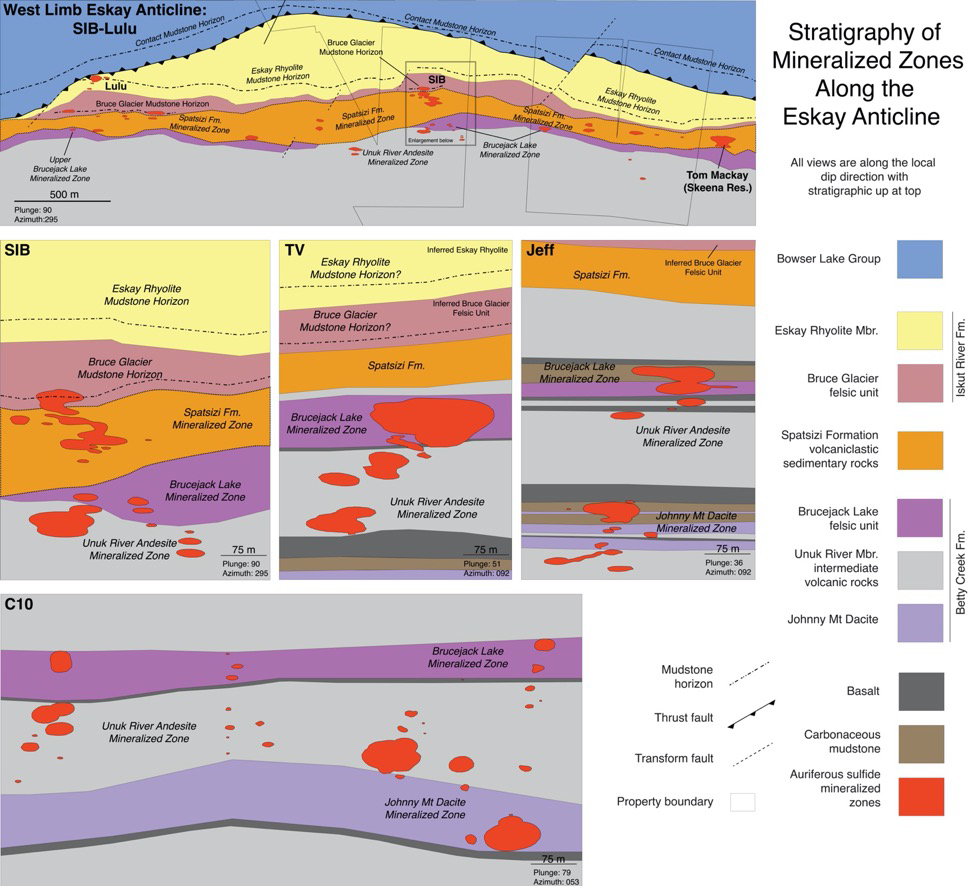
(Figure 1: Stratigraphic sections of the SIB, Lulu, TV, Jeff, and C10 VMS deposits. Mineralized zones were interpolated using Leapfrog three-dimensional modelling software, projected onto the stratigraphic section, and include Au grades ≥ 0.25 g/t.)
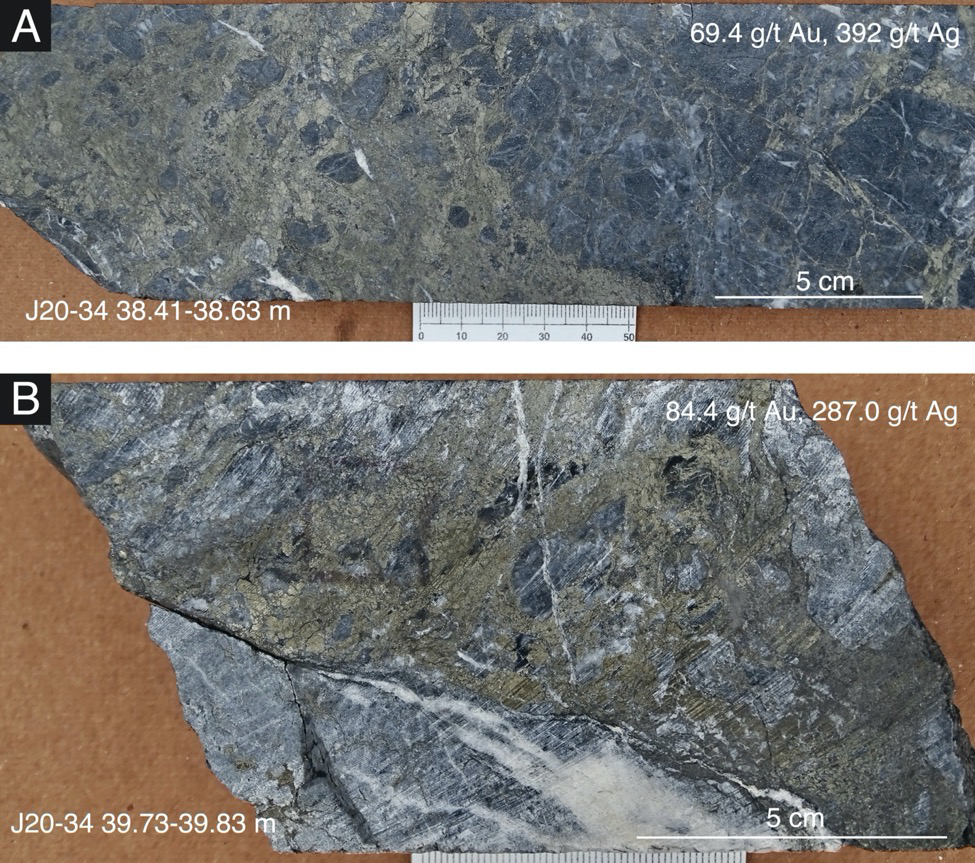
(Figure 2: Subseafloor replacement-style precious metal mineralization within dacite breccia in drill hole J20-34. This style of mineralization is representative of all mineralization drilled to date at TV and Jeff.)
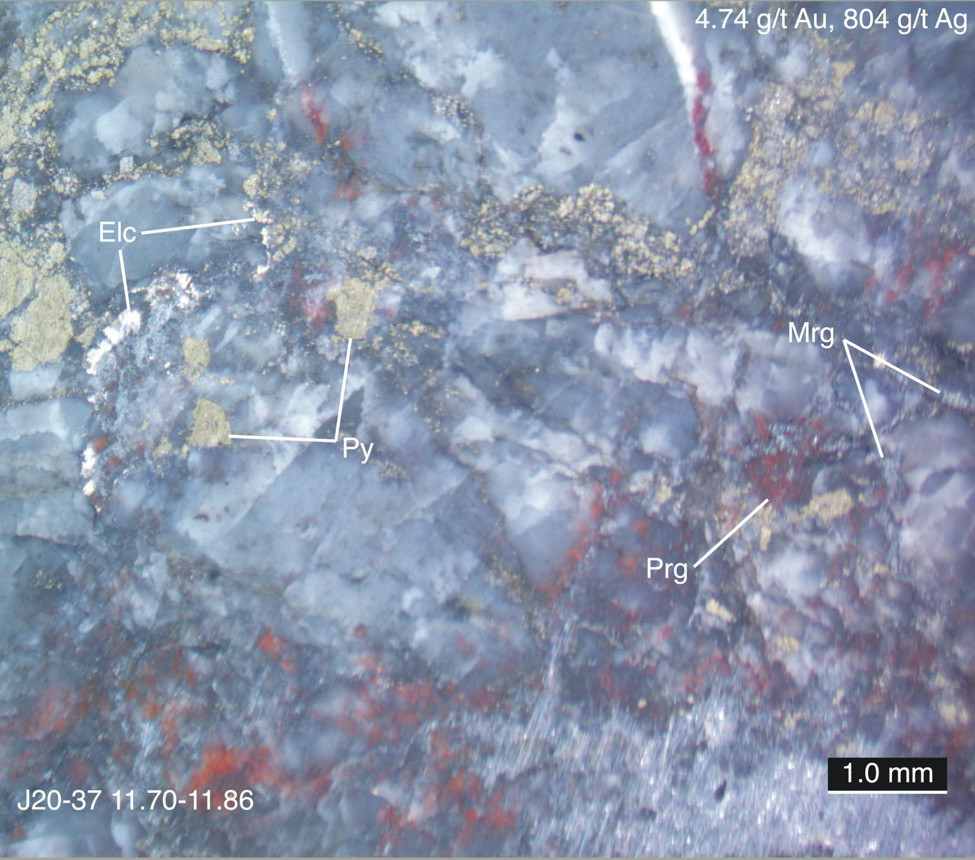
(Figure 3: Macroscopic electrum, miargyrite, and pyrargyrite in sample J20-37 from the interval 11.70-11.86 m.)
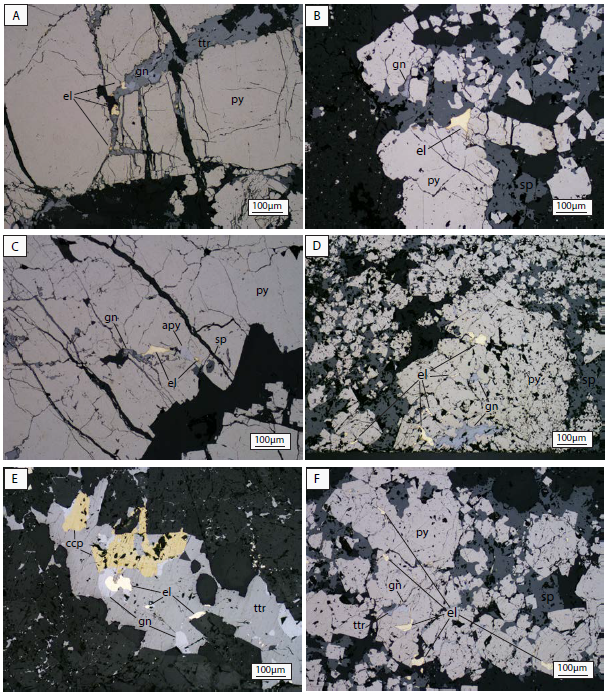
(Figure 4: Reflected light microscope images of the typical precious metal mineral assemblage from drill hole J20-34 at Jeff. Photos A, B, and C are from 39.59 m depth; D, E, and F are from 39.29 m depth. Electrum inclusions in tetrahedrite and pyrite are approximately 100 µm across and disseminated throughout the samples.)
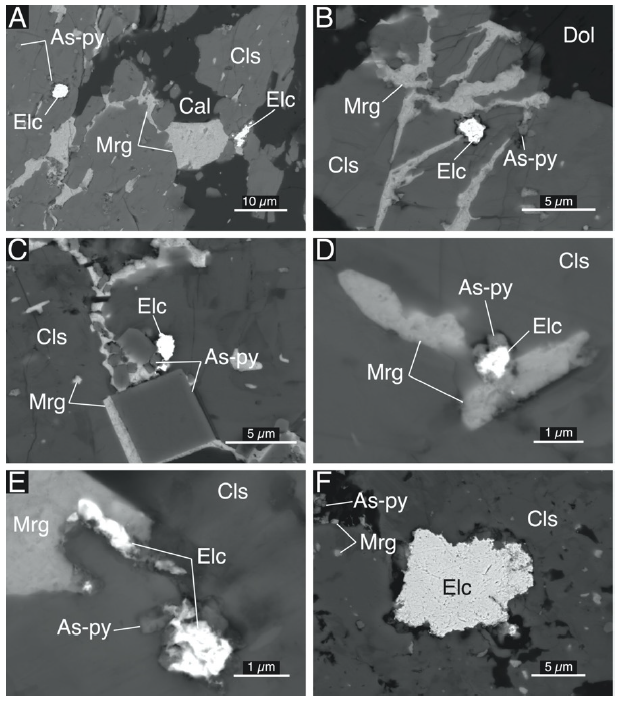
(Figure 5: Electron microscope images of the typical precious metal mineral assemblage at Lulu. Electrum grains are approximately 1-10 µm across, and closely associated with the silver sulfosalt mineral miargyrite, arsenian pyrite, and the hydrothermal alteration mineral celsian.)
SOURCE: Eskay Mining Corp.
View source version on accesswire.com:
https://www.accesswire.com/640108/Eskay-Mining-Defines-Multiple-Mineralized-Horizons-Across-Its-100-Owned-Consolidated-Eskay-Precious-Metal-Rich-VMS-Project



























